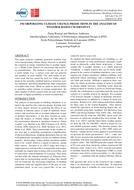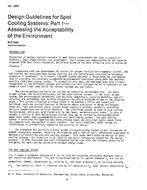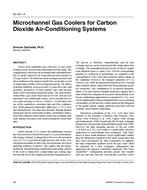The distribution of liquid droplets emerging from an evaporator tube bundle is characterized for refrigerants R-123 and R-134a with triangular and rotated triangular tube arrangements of pitch 1.167. The purpose of this research is to improve the understanding of the droplet ejection process to aid in the design of evaporators typically used in larger chiller systems. A laser and camera system in a shadowgraphy arrangement captured images of the evaporator headspace at varying conditions. Conventional shadowgraphy techniques were applied to recognize droplets and match droplets for velocity calculations. The evaporator conditions were varied with mass fluxes from 3.5 to 40.7 kg/s-m² (2250 to 30000 lb/hr-ft²), toprows heat fluxes from 5.3 to 31.5 kW/m² (1700 to 10000 Btu/hr-ft²), and outlet saturation temperatures of 4.4 and 12.8 °C (40 and 55 °F). Conditions ranged from flooded to dryout on the top rows. Particle number count, size distribution, and velocity are presented. The calculated liquid volume fraction in the headspace is also presented, ranging in value from 0 to 10%. Liquid distribution in the headspace is found to be a function of all varied properties, most strongly choice of refrigerant, though mass flux, saturation temperature, heat flux, and liquid level all matter. Vapor shear is thought to lead to the majority of droplets generated, especially in the upper headspace. The high liquid-vapor density ratio of R-123 and corresponding high velocities make it particularly difficult to separate liquid droplets before they escape the tube bundle.
Zip file contains report and appendices. (542 MB)
Product Details
- Published:
- 2018
- Number of Pages:
- 163
- Units of Measure:
- Dual
- File Size:
- 1 file , 540 MB
- Product Code(s):
- D-RP-1556


